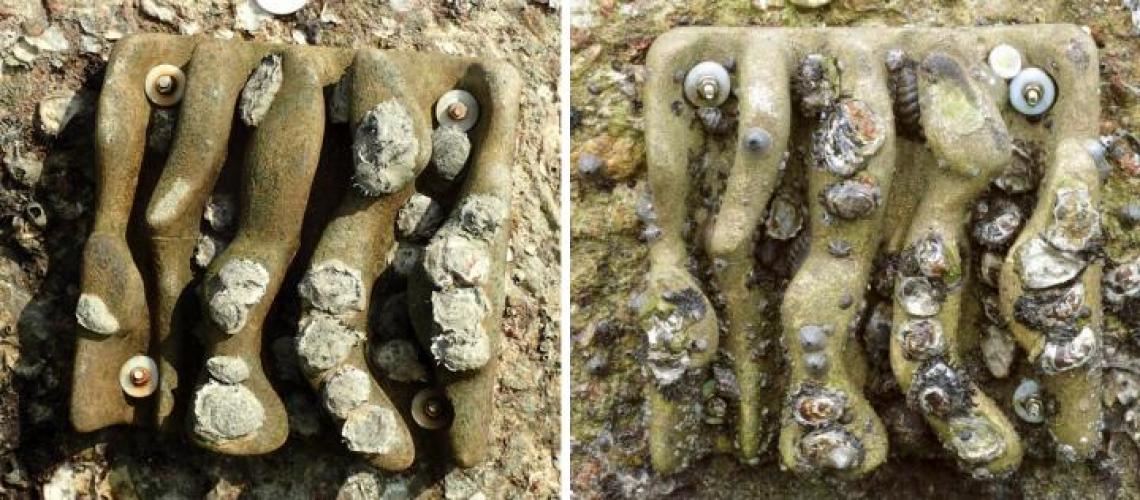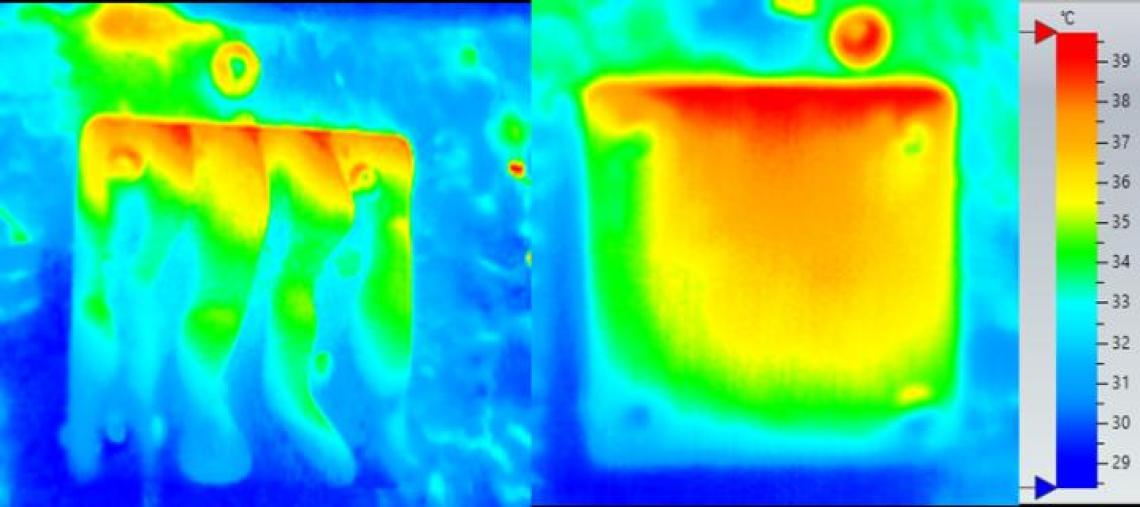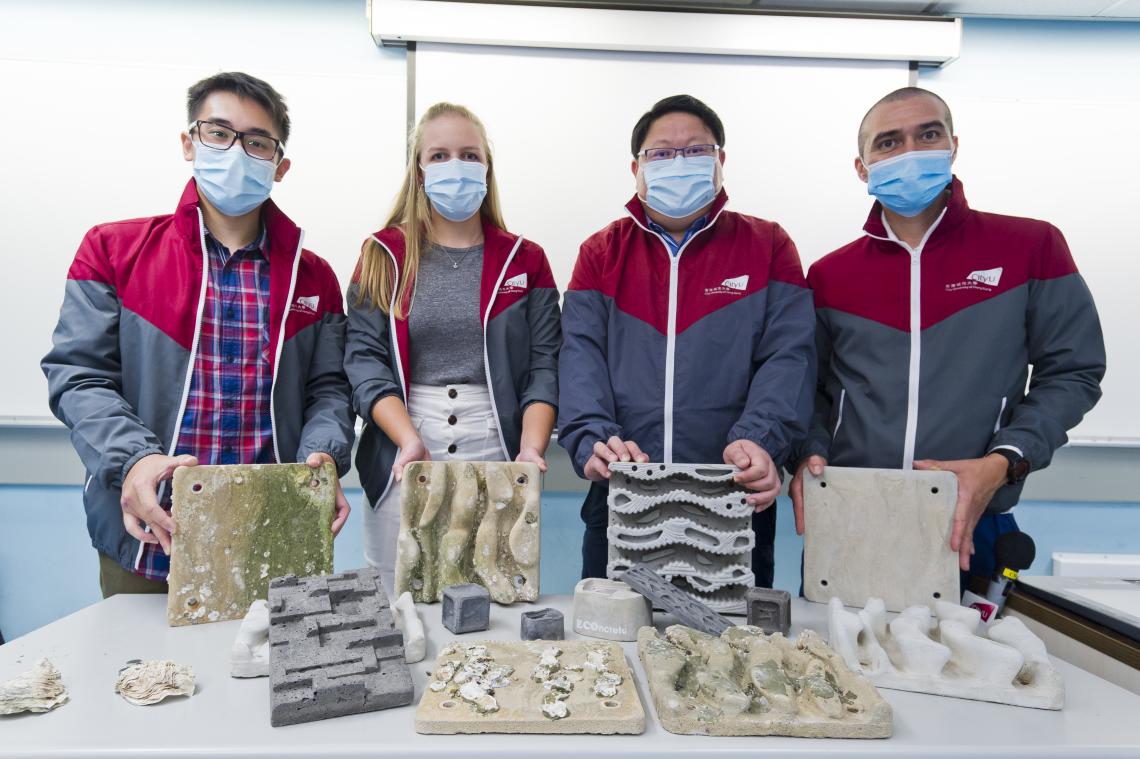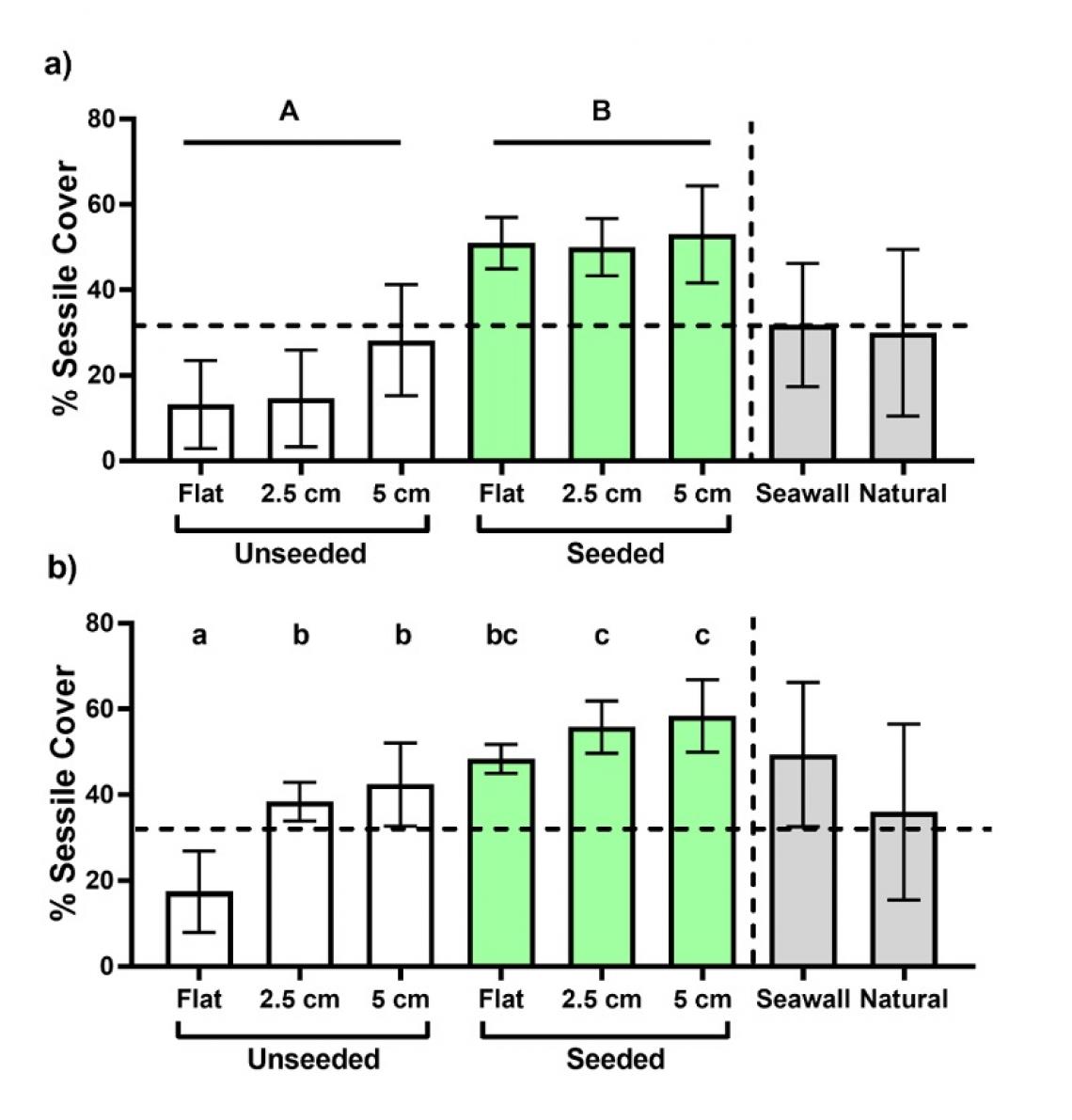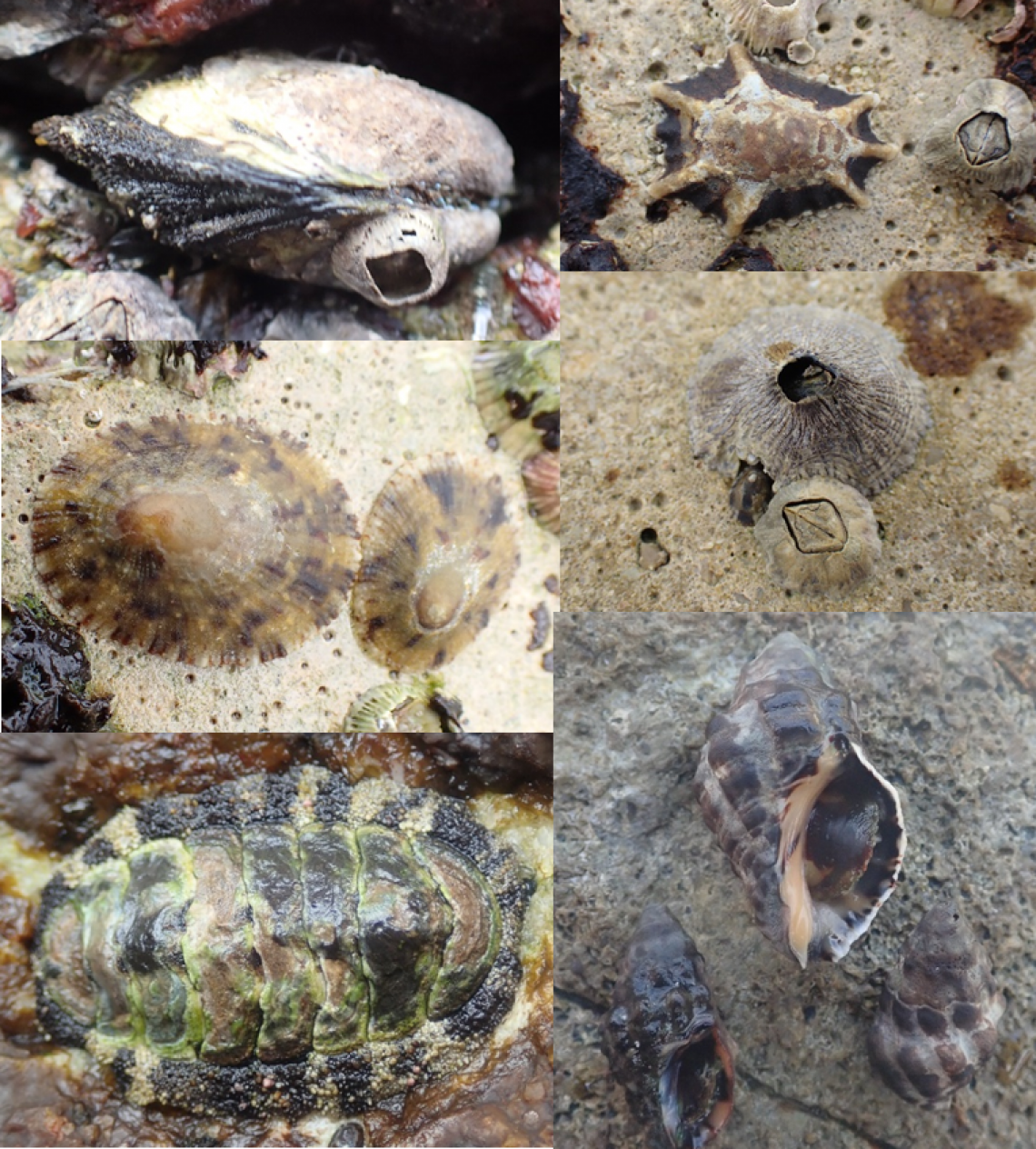Eco-engineered tiles attached to the vertical seawalls in Lok On Pai, Hong Kong.
Professor Kenneth Leung Mei-yee, who has recently joined CityU and is the new Director of the State Key Laboratory of Marine Pollution (SKLMP) and Chair Professor of Environmental Toxicology & Chemistry, led a team made up of researchers from the University of Hong Kong (HKU) as well as universities in the United Kingdom, Australia and Singapore to conduct the experiment in Hong Kong. Their findings were published recently in the journal Marine Pollution Bulletin, titled "Provision of refugia and seeding with native bivalves can enhance biodiversity on vertical seawalls".
Coastal development and reclamation have caused a global increase in artificial vertical seawalls that protect the shoreline from wave action, erosion and flooding. However, these seawalls do not have the natural complexity of rocky shores and can reach extremely high temperatures when exposed at low tide. This makes them unsuitable for many intertidal marine species, including the filter-feeding oysters that improve water quality. The resulting lack of biodiversity weakens the coastal ecosystem.
As part of the international collaboration World Harbour Project initiated by the Sydney Institute of Marine Science to address these issues, Professor Leung led the team to test the effects of eco-engineered tiles on the coastal biodiversity in Hong Kong. Designed for the Project, the experimental tiles were constructed with crevices and grooved surfaces, based on the combination of ecological and engineering principles. The team attached the tiles with crevices of different depth to the vertical seawalls in Sham Shui Kok on Lantau Island and Lok On Pai in Tuen Mun in the western waters of Hong Kong for testing.
Eco-engineered tiles before deployment (left) and after 12 months (right). More species like snails are found on the tiles after 1 year.
The temperature of eco-engineered tiles (left) is lower than the flat tiles (right) during summer.
Complex habitat on the eco-engineered tiles
Their experimental results showed that the eco-engineered tiles with crevices hosted more species and a higher number of animals than not just scraped seawall, but also the flat eco-engineered tiles after 12 months. Compared with the flat tiles, the tiles with crevices had an increase of 19 to 51% in the number of species, and an increase of 59 to 416% in the number of animals. It demonstrated that by increasing the surface complexity with crevices, the eco-engineered tiles provided shelter and reduced the temperature for animals.
In particular, those with crevices of 2.5 cm or 5 cm deep had up to three times the number of species present in the shaded crevices than the exposed ledges. Species such as snails and limpets preferred the cooler and shaded crevices of the tiles, hence prompting the overall increase in the number of species and individual animals on the tiles.
"The promising results from our Hong Kong experiment clearly showed that we can effectively enhance marine biodiversity on seawalls by increasing habitat complexity through eco-engineering. This technology can be applied to all existing seawalls in Hong Kong to promote biodiversity," said Professor Leung.
The research team also attached live rock oysters to half of the tiles to test if the oysters could further enhance marine biodiversity. They found that the tiles with crevices and seeded with oyster performed the best, with an increase of 38 to 76% in the number of species and an increase of 120 to 571% in the number of animals, when compared with flat and unseeded tiles. The attached oysters survived well during the 12 months, and some oysters provided food for predators, promoting a healthy ecosystem. The tiles with oysters attracted growth of new oysters during the experiment, and the juvenile oysters also preferred the crevices of the complex tiles to the flat tiles.
Supported by the Civil Engineering and Development Department, Professor Leung is running another trial of various eco-engineered fixtures (i.e., tiles, panels, tidal pools, armouring units and oyster baskets) on vertical and sloping seawalls in Ma Liu Shui, Sai Kung and Tuen Mun. He believes there is great potential in applying the eco-engineering technology to help mitigate the negative effects of artificial seawalls not just in Hong Kong, but also internationally.
Professor Kenneth Leung Mei-yee (second from right) and his team, Chi C. Lo?(from the left), Thea E. Bradford and Dr Juan C. Astudillo (on the right). (Photo source: City University of Hong Kong)
Effects of complexity varied across the globe
Apart from Hong Kong, the same eco-engineered tiles were deployed in another 13 locations around the world, including London, Sydney and San Francisco, for 12 months under the World Harbour Project.
It was found that the increased complexity consistently enhanced the biodiversity of marine invertebrates on the experimental tiles across all locations, despite some variation. The effects of habitat complexity on total species richness and mobile mollusc (soft-bodied invertebrates like gastropods and limpets) abundance were the greatest at lower or tropical latitudes, while the cover of sessile (non-mobile animals that live attached to a surface) invertebrates, such as oysters, barnacles and mussels, responded more strongly to complexity at subtropical or higher latitudes.
They also found that the magnitude of the complexity effects on the colonization of individual organisms varied spatially according to factors like tidal elevation and latitude, from strongly positive to negligible, or in a few cases, negative. "This suggests that in order to maximize the benefits of eco-engineering, we still need to have a more thorough understanding of how the complexity effects are shaped by the site-specific environmental and biological factors," added Professor Leung.
Professor Leung and Dr Juan C. Astudillo, who is Research Associate at SKLMP at CityU, are the corresponding authors of the paper in Marine Pollution Bulletin. The four co-first authors are from the University of Hong Kong. Other co-authors come from Swansea University, University of Tasmania, University of New South Wales and Nanyang Technological University.
The results of the World Harbour Project's global study titled "A global analysis of complexity-biodiversity relationships on marine artificial structures" was published in the scientific journal Global Ecology and Biogeography. Professor Leung is one of the 46-member experts of the study.
Percentage of the eco-engineered tiles covered by oysters, barnacles and mussels after 12 months on Hong Kong seawalls in Lok On Pai (top) and Sham Shui Kok (bottom). Letters show that the eco-engineered tiles that were seeded with oysters had higher growth of oysters, barnacles and mussels after 12 months. The horizontal line shows the initial percentage covered by the seeded oysters. (Photo source: DOI number: 10.1016/j.marpolbul.2020.111578)
Examples of species found on the eco-engineered tiles. (Photo source: City University of Hong Kong)



